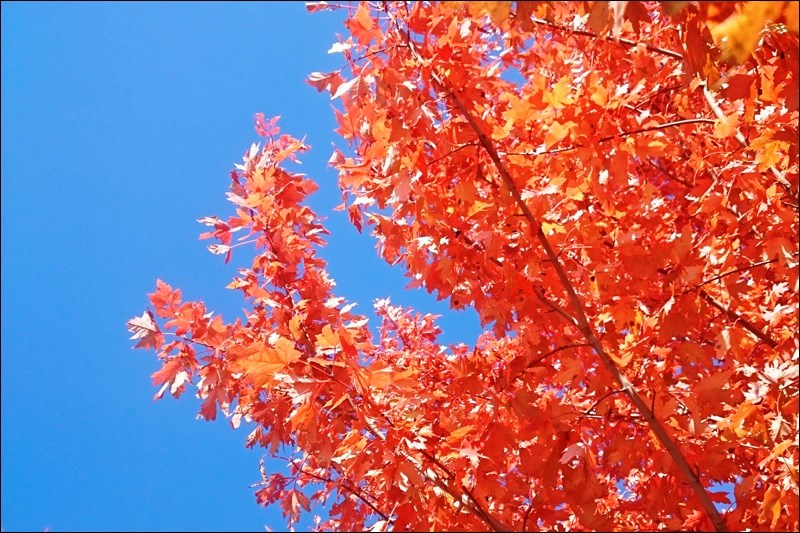The trees are the most amazing part of every landscape!. When we have the good fortune to travel to other places, it is the trees which are most noticeable and which often bring the largest smiles. Today, I am writing from Ontario and my view from the window is a splendid cornucopia of beautiful fall colours. The e images going along with this article will focus on the myriad of colours right now proudly being displayed by a variety of maple trees.
Maple trees belong to the genus Acer and there are more than 100 species of maples around the world. Most of the maples are deciduous and will often display spectacular colours in the autumn if the climate allows that development. In southern Asia there are a few native maples that are not deciduous so for those of us who are horticultural buffs, the exceptions to the norm continues.
From a botany perspective, the maple is a perfect tree. From the smallest detail to the overall proportion of the tree every characteristic is in duplicate. Each bud is matched by a twin bud that sits directly opposite of each other on the twig. Branches and leaves are also twins and even in the seed leaf patterns angles and curves of one side are the mirror opposite on the other. With the exception of the Manitoba maple all maple leaves are readily identified by their three or five lobed leaves, distinguished primarily by their teeth and notches.
The wood of the maple is the second most important hardwood species in Canada. It rides on the tails of birch and is used for flooring, furniture, boats and the interior woodwork of many houses. In Ontario, we find native maples like sugar, black, red, silver, mountain, striped as well as the introduced Manitoba and Norway maples.
The Sugar Maple (Acer saccharum) is native to the broadleaf forests in Ontario, Quebec and the Maritimes and extends as far south as Georgia. It thrives on deep, fertile and well-drained soils and is a one of our largest and long-lived maples growing more than 35 metres in height and up to 90 centimetres in diameter. This maple has spectacular fall colour that surpasses all of the other maples and also produces a sap that is reduced to produce maple syrup. The wood of the sugar maple is prized by furniture builders and this is also the maple whose leaf is represented by our Canadian flag.
Acer saccharum var. nigrum or the black maple is closely related to the sugar maple and often will cross with each other with offspring a combination of the characteristics of both parents. The black maple leaves are downy on the under surface and will be droopier or more downward curving and the tree itself is usually smaller in stature.
The red maple (Acer rubrum) is a medium sized tree that is found in the Great Lakes region of Ontario. It is straight and tall in a forest setting but when planted individually it will tend to divide the main stem, which makes it susceptible to breaking later in life. The buds will be smooth and crimson, the leaves are three lobed and will also turn a brilliant red in autumn. Throughout the year, some part of this tree will always show red: the buds in spring; the leaves in fall; and the twigs at all times.
— Hanbidge is a horticulturist with the Saskatoon School of Horticulture and can be reached at 306-931-GROW(4769); by email at growyourfuture@gmail.com; facebook: @schoolofhort; twitter: @hortiuclturepat; instagram: patyplant or check out our website at saskhort.com



